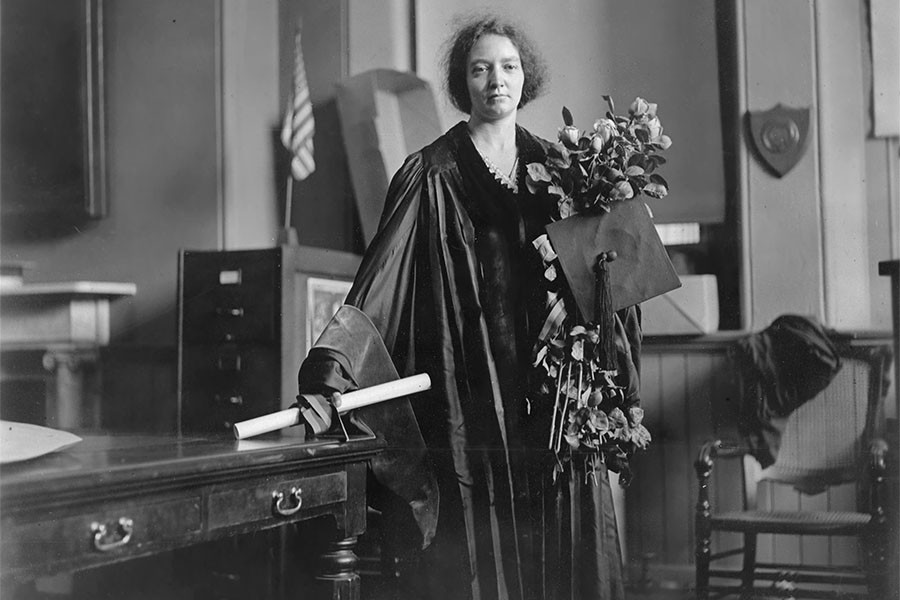Nobel Prize-winning chemist following in her mother's footsteps: Who is Irène Curie-Joliot?
In addition to her contributions to science, we have compiled the things that are curious about the life of Irène Curie-Joliot, one of the women of science who made her name in history with her struggle against fascism.

Her full name is Irène Curie, she was born on September 12, 1897, in Paris, France. She was born as the eldest daughter of her father Pierre and mother Marie Curie. Curie has a brother named Ève. Curie and her brother, who lost their father at a young age, were raised by their mother. She was sent to a school near the Paris Observatory by her mother, who was very devoted to education. Curie, who was gifted in mathematics in 1906, worked for nearly two years in a group called "The Cooperative", which included many distinguished French academics, including her mother.
Sent to Poland with her brother to live with her aunts, Curie's education was very strict. She was taking German and trigonometry lessons every day, she. Back in high school at Collège Sévigné in Paris by 1914, Curie entered a more orthodox learning environment. She then went on to the Faculty of Science at the Sorbonne to complete her undergraduate studies. But her education was interrupted in 1916 by World War I.
Curie took a nursing course in college to assist her mother in the field and began working on the battlefield as a radiograph nurse. A few months later, Curie, who was left to work alone at a radiology facility in Belgium, taught doctors how to locate shrapnel in bodies using radiology. She was honored with a military medal for her contribution and assistance.
After the war, she returned to the Sorbonne in Paris to complete her second bachelor's degree in mathematics and physics. Continuing to work as her mother's assistant, Curie taught radiology at the Radium Institute, founded by her family, and became a Doctor of Science in 1925. Toward the end of her doctorate, she learned the precision laboratory techniques required for radiochemical research by the young chemical engineer Frédéric Joliot. Irène and Frédéric, who later married, combined their research work on the study of the atomic nucleus.
In 1932, the duo experimented with gamma rays, and although they identified both the positron and the neutron as a result of the experiment, they could not interpret it. The discoveries were later claimed by other scientists. The following year, the duo were the first to calculate the correct mass of the neutron. Joliot-Curie continued to introduce their name into the scientific community. In addition to all this, they developed a new theory from an interesting experiment they conducted.
During an experiment that bombarded aluminum with alpha rays, the duo discovered that only protons were detected. Proposing that protons transform into neutrons and positrons, based on the undetectable electron and positron pair, the duo continued to develop their ideas, receiving mixed reviews.
In 1934, the duo made a discovery that fixed their place in the history of science. Building on the work of Marie and Pierre Curie, who isolated naturally occurring radioactive elements, the duo fulfilled the alchemist's dream of transforming one element into another. Thus, radioactive nitrogen from boron; radioactive isotopes of phosphorus from aluminum and conversion from magnesium to silicon. Their discovery was formally known as "positron emission," or beta decay, in which a proton in the radioactive nucleus transforms into a neutron and releases a positron and an electron neutrino.
By that time, the application of radioactive materials for use in medicine was increasing, and this discovery allowed the rapid, inexpensive, and abundant creation of radioactive materials. In 1935, Joliot-Curie won the Nobel Prize in Chemistry, thereby gaining fame and recognition in the scientific community. In addition, she was awarded a professorship at the Faculty of Science.
Curie led research on the radium nucleus, which led a group of German physicists, including Otto Hahn, Lise Meitner, and Fritz Strassman, to discover nuclear fission. In 1948, Joliot-Curie, together with scientists, built the first French nuclear reactor using work on nuclear fission. This reactor marked the beginning of nuclear energy as a power source for France. Due to the work of Joliot-Curies, in 2020 France produces around 75% of its electricity from nuclear energy.
After years of working closely with radioactive materials, Curie was diagnosed with leukemia. Receiving antibiotic therapy and a series of surgeries for his illness, Curie's pain temporarily eased, but his condition continued to worsen. Continuing to work despite this, Joliot-Curie made plans in 1955 for new physics laboratories at the Orsay Faculty of Science, now part of Paris-Saclay University south of Paris.
Private life
Irène and Frédéric changed their last name to "Joliot-Curie" after they got married in 1926. The couple had two children, Hélène and Pierre. The couple's daughter, Hélène Langevin-Joliot, became a nuclear physicist and professor at the University of Paris. Their son, Pierre Joliot, became a biochemist.
On March 17, 1956, at the age of 58, Joliot-Curie died of radiation-induced leukemia. Her husband Frédéric's health also deteriorated, and he died in 1958 of liver disease, which was said to be the result of radiation exposure.
Joliot-Curie, an atheist and anti-war, the French government held a national funeral in his honor. Joliot-Curies continued the policy of publishing all the work of Pierre Curie and Marie Curie for the benefit of the scientific community. The duo also took an active part in institutions promoting women's education. Her name was included in the "Monument to the X-Ray and Radium Martyrs of All Nations" erected in Hamburg, Germany.
